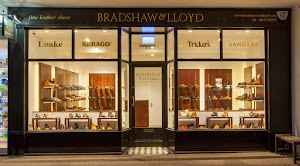It was Aristotle Onassis who said:
“If you want to know the measure of a man look at the shoes he wears“
Cheap shoes on a man say that does not understand the message he is sending to the world. Good suit, cheap shoes? It says that this man will probably not go the final mile, and maybe he is like that in his dealings with others, in his business. When a man tells you that he will not “pay good money for shoes, they’re not worth it” he is telling you he is not worth it. A lot of men will not understand this, but the women they are trying to date will.
Good shoes clean and well polished say that at some level this man is disciplined and has a pride in his appearance. Like all such visual clues, it goes straight to our subconscious, becoming part of our initial assessment of a person. It may not be fair, but it is how the human psyche works.
Good shoes are a vital part of looking good. That you can either wear good shoes and amplify your style or wear bad shoes and, well, screw it up. Bad shoes on good clothes stand out like a beacon, shouting I do not really care about how I look.
Quality English shoes are superb. ust by pulling them on you look elegant, confident and worldly.
Good shoes put a man in touch with wealth and luxury. Buying a quality pair of English shoes is one of the cheapest ways to enter the world of craftsmanship and luxury. Cheap, because the price of good shoes is low compared to other luxury goods. Cheap, because good shoes are a great investment and with care will last a man many years.
The history of the English shoe deserves a short re-telling. The modern English shoe first emerged in the early 1800s, probably from a variety of shoe types that were then prevalent in Europe and England. At that time shoe-making was primarily a craft industry, with the bulk of the industry based in Northamptonshire, in the north of England. Northamptonshire was then a rural area, and provided both high quality leather and the oak and charcoal that were necessary for the tanning of the shoe leathers.
As industrialisation progressed and the population of England grew, so the original craft shops became large industrial factories in their own right. Out of these beginnings came the classic English brands that we have today, such as Grenson, Crockett and Jones, Loakes etc.
Goodyear welting revolutionised English shoemaking. Welting is the practice of stitching a strip of leather to the insole and upper of the shore and then stitching it in turn to the sole (in America it is called the outsole). This made the shoes stronger, more durable, and more flexible. It also meant that shoes could be resoled, extending their life.
This process really took off when Christian Dancel, a German immigrant to America, invented a machine which could stitch welted shoes. The Goodyear company bought process in 1864 and it came to England in the 1870′s. All quality English shoemakers now use Goodyear welting and it has become the distinctive feature of English shoes. Shoes became artefacts that could be made on a production line and from those beginnings we got the historic shoe brands that we have today.
There is no denying that English shoe-making had a rough ride in the 20th century. As industrial processes for making shoes became simpler and cheap shoes multiplied, quality shoe-makers found it hard to compete and a number of great brands simply went under. The sixties saw the influx of cheap poor quality shoes from Eastern Europe. Oddly enough, there was a tradition of quality shoemaking in Czechoslovakia and Hungary but communism virtually killed it. This was followed more recently by cheap shoes from China, which also cut into the market.
However in the last twenty years the market for English shoes has grown and there are two factors that have had a considerable influence on the market for English shoes.
The first of these is that London has become the foremost financial market in the world. English bankers have always dressed well and there are now more of them and they all need good shoes. The great shoe makers have grown on the back of their support.
The second factor has been the increase in American visitors to England and American men’s sophisticated appetite for quality luxury goods. Brands like Barkers and Church’s have become synonymous with good taste and luxury.
During this period the definition of what makes a quality English shoe has hardened. English shoes are now defined by the use of Goodyear welting and hand-finishing (especially in the visible stitching), classic styling and good leathers.
However the struggle seems to be over. Having preserved the English craft tradition of benchmade shoes, English shoemakers are thriving and reaching new markets. Both the bespoke and the ready-to-wear traditions are thriving, long may it continue.
For the latest range of quality English goodyear welted shoes visit the Bradshaw and Lloyd website at www.bradshawandlloyd.com where you can view:
Loake shoes, Sebago shoes, Sanders shoes, Trickers shoes and Bradshaw and Lloyd shoes.


